The James Webb Space Telescope manages its mid-IR detectors’ thermal noise and dark current with a robust mechanical cooler to deliver unparalleled sensitivity and, engineers hope, mission lifetime.
When the European Space Agency’s (ESA’s) Herschel Space Observatory revealed that the universe was far richer in star-forming dust than previously thought, the engineers who were developing a new mid-infrared space instrument recognized that their project’s potential had expanded.
The observatory, with its far-IR camera and low-resolution spectrometer covering
wavelengths down to 55 μm, enabled scientists to discover an unexpected abundance of dusty galaxies at very high redshifts (Figure 1), according to George Rieke, professor of astronomy and planetary sciences at the University of Arizona in Tucson. NASA’s Spitzer Space Telescope and its Multiband Imaging
Photometer (MIPS), at 24 μm, later reached across most of the period when galaxy star formation peaked, about
2.5 billion years after the Big Bang.
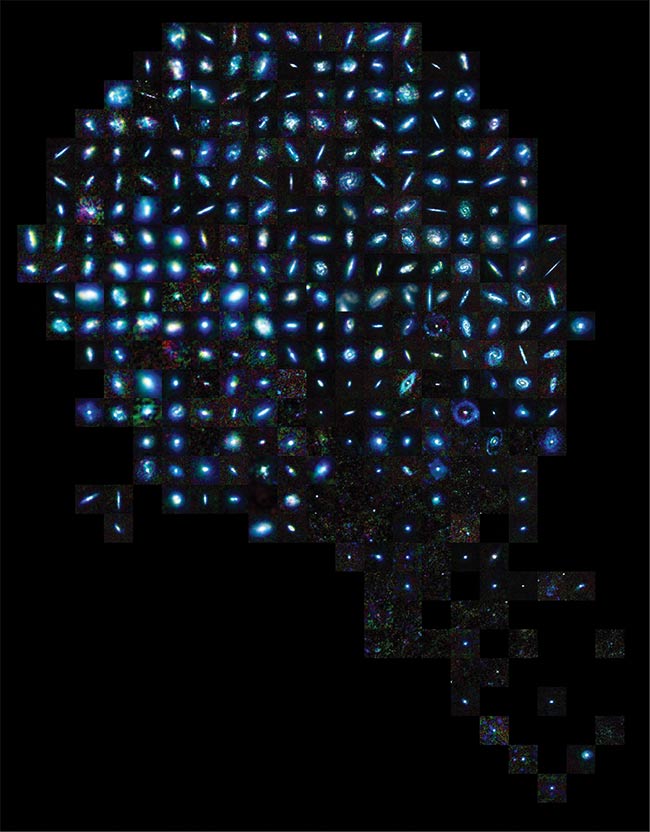
Figure 1. A collage of galaxies included in the Herschel Reference Survey, the largest census of cosmic dust in the local universe. Courtesy of European Space Agency.
The dust and the interstellar gas clouds that carry it hold clues to early star formation. And after a successful launch last December, the James Webb Space
Telescope will now peer into and beyond the dust with its mid-IR instrument (MIRI).
“We definitely wanted to reach deeper with our 21-μm band to document how even small galaxies heat their dust and, most importantly, to get more detailed information on the infrared-emitting galaxies in the Spitzer maps,” said Rieke, who is also MIRI’s science team lead for NASA’s Jet Propulsion Laboratory (JPL). This more detailed information will help researchers to determine how many of these galaxies are powered by active galactic nuclei rather than stars.
“Herschel and ground-based submillimeter telescopes, particularly the South Pole Telescope, showed that the era of very dusty galaxies reaches back to just a billion years after the Big Bang. That did not directly affect the design of MIRI but will play a big role in observations,” Rieke said. “For example, MIRI will obtain spectra of these galaxies to understand the state of their populations of stars and how they are powered.”
Studying the first galaxies
When Webb launched (Figure 2), it took into space an unprecedented arsenal of IR sensors. It will peer back 13.5 billion years and identify the first galaxies after the Big Bang to shed light not only on how the galaxies were assembled but
also on the birth of planetary systems within dust clouds. Twice the size of the Hubble Space Telescope and equipped with a 6.5-m mirror, the 7.2-ton, IR-optimized Webb is NASA’s largest orbital telescope.

Figure 2. The James Webb Space Telescope lifts off from an Ariane 5 launcher. Courtesy of NASA Goddard Space Flight Center and ESA Camera/Realtor Space Systems Engineering.
For studies of first galaxies, Webb relies on MIRI (Figure 3) and three near-infrared instruments — an NIR camera from the University of Arizona, an NIR spectrograph from ESA, and a fine-guidance sensor/NIR imager and slitless spectrograph from the Canadian Space Agency.

Figure 3. The Mid-IR Instrument (MIRI) is installed onto Webb at the NASA Goddard Spaceflight Center. Courtesy of Northrop Grumman.
“MIRI data will be important to understanding better how galaxies have evolved after the first stars formed and [will]
show if there are supermassive black holes accreting material buried in dust clouds at their centers,” said Gillian
Wright, MIRI’s European principal investigator. “MIRI may also show things in the early universe that we do not know about yet, because the universe is relatively unexplored at mid-infrared wavelengths. An example of that sort of discovery came from Herschel and the discovery of very dusty galaxies that were not visible in Hubble images. MIRI will be used to study these dusty galaxies, using spectroscopy to learn about their nature in more detail.”
MIR sensitivity
Webb is not the first space telescope with a MIR instrument payload. Earlier MIR space telescopes included the Infrared Astronomical Satellite, which launched in 1983; the Infrared Space Observatory, in 1995; and Spitzer, in 2003. MIRI is not radically different from its predecessors but builds on their successes, said Michael Ressler, JPL’s MIRI project scientist. The 1-MP detectors in Webb are optimized for very focused, extremely sensitive observations. MIRI has sharp optics and a spectrometer with spectral resolution as high as its predecessors’ but with much greater sensitivity (Figure 4). And MIRI has a cryocooler that promises a longer lifespan.
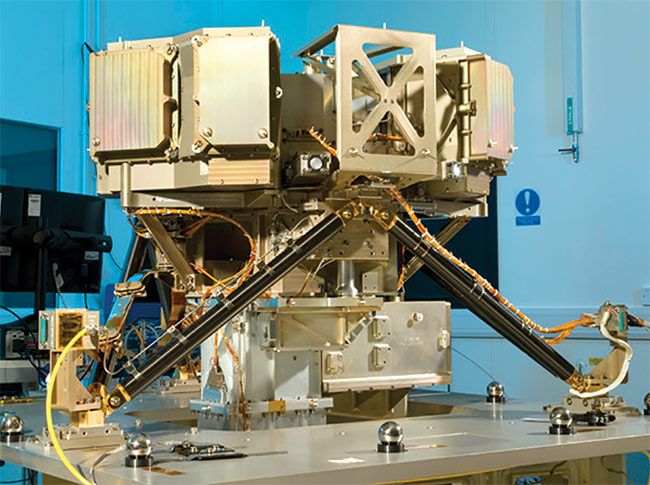
Figure 4. MIRI during ambient temperature alignment testing in a RAL Space cleanroom. Courtesy of Science and Technology Facilities Council.
Conceptual planning for MIRI began in 1997. After parallel studies in the U.S. and Europe bolstered the “amazing science” that could be conducted in the MIR range, MIRI was confirmed for the mission in 2002, Wright said. The complexity
associated with cooling MIRI to 7 K (−448 ºF or −266 ºC) prompted a 50-50 development partnership between JPL and ESA to tap knowledge and experience from previous IR missions such as Spitzer and Herschel.
Whereas Herschel’s far-IR cameras were ideal for observing the cosmic dust heated by starlight to a few degrees above absolute zero, MIRI’s wavelengths will be able to penetrate dust clouds and some simple molecules such as methane. “This makes the MIRI capabilities important for science ranging from studying protostars and their surrounding protoplanetary disks, the energy balance of exoplanets, the chemistry of exoplanet atmospheres, mass loss from evolved stars, circumnuclear tori around the central black holes in active galactic nuclei, to galaxy evolution in the early universe,” Wright said.
Cooling extends lifetime
Webb’s mercury-cadmium-telluride (HgCdTe) NIR instruments work at wavelengths from 0.6 to 5 μm. MIRI works at up to 28 μm. MIRI’s detectors are silicon/arsenic based. “It takes very little energy to knock an electron out of an arsenic atom,” Rieke said, “and putting them in silicon lets us do that in the context of standard silicon-based electronics. This is critical to make our detector arrays. They can reach to 28 μm and detect signals down to just a photon per second or less in reasonable integration times (say, 20 minutes).”
However, the longer wavelengths require colder operating temperatures, Wright said. A structural operating temperature below 15 K prevents thermal emissions from MIRI’s structure from being detected by the silicon/arsenic-based detectors. The detectors’ dark current pushes the limit to below 7 K. Taken together, these factors put MIRI’s preferred operating temperature at 6.4 K.
This is 6× colder than the requirement of Webb’s NIR instruments, which are passively cooled by the coldness of space, with the help of a tennis court-sized sunshield.
“The thermal energy associated with [the detectors] releases huge numbers of free electrons that our electronics would pick up, and it would blind us completely to the photons we want to see,” Rieke said.
Although MIRI’s cryocooler pushes operational temperatures to nearly absolute zero, the system is not the coldest to fly in space. Hershel’s longer IR wavelengths required a 1.7 K operating temperature, which was achieved in a cryostat with superfluid helium. Spitzer’s telescope was cooled to 5.5 K, and its mid-IR detectors operated at temperatures from 6 to 6.2 K.
“In that sense, MIRI isn’t even that cold, but [its] cooler should have a far greater lifetime than any of our predecessors,” Ressler said. For example, Hershel had a mission lifetime of four years, and Spitzer had a lifetime of five and a half years. MIRI is projected to work for about 20 years.
MIRI’s robust cryocooler dates back
to the 1990s, when JPL started a program to develop long-life, low-power coolers for space applications. JPL engineers initially envisioned cooling MIRI with
a liquid hydrogen dewar, but they instead chose a mechanical cooler (Figures 5
and 6).
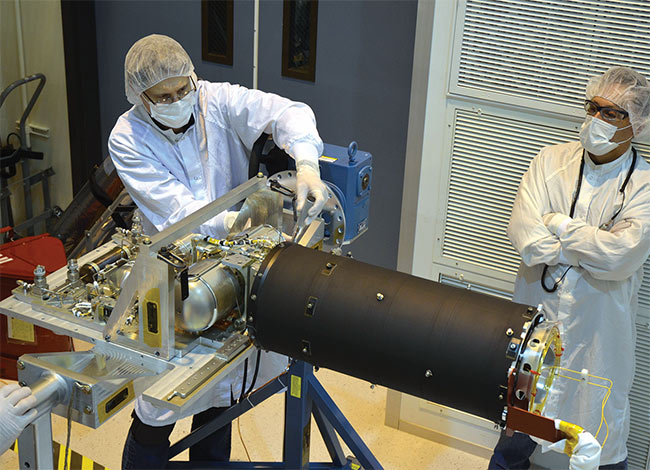
Figure 5. An inspection of the cryocooler at the Northrop Grumman Aerospace Systems facility in Redondo Beach, Calif. Courtesy of NASA/JPL-Caltech.
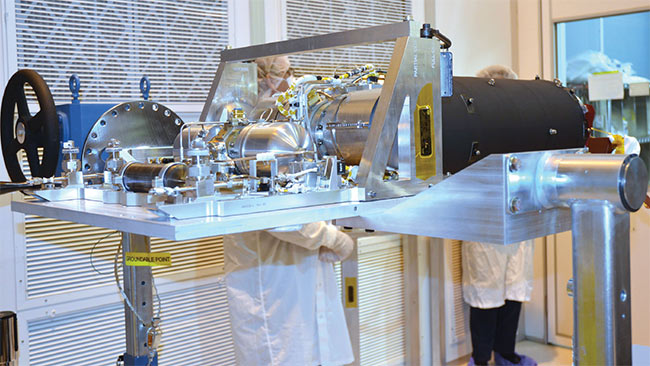
Figure 6. MIRI’s cryocooler. Courtesy of NASA/JPL-Caltech.
“The biggest challenges since then arise because the compressors for the cooler have to be in the spacecraft and warm, but the cooling has to be delivered to the instrument and detectors in the
cold environment at the telescope,”
Rieke said.
He likened the cryocooler to a common refrigerator, in which gas is compressed and piped to a cold head. “The difference is that the cold head is far from the compressor for us, and the heat that is allowed to leak in has to be tiny or things do not get cold. The challenge is a bit like if you wanted to cool things in your freezer in the garage with the compressor in your kitchen refrigerator. You would have to put a lot of effort into insulating the plumbing used to carry the compressed gas from the kitchen to the garage.”
A Christmas finale
Webb launched on Christmas morning at 4:20 a.m. from an Ariane 5 rocket in Kourou, French Guiana, and the telescope began a 29-day, million-mile journey out to the second Lagrange point (L2), which is where Herschel also flew (Figure 7).
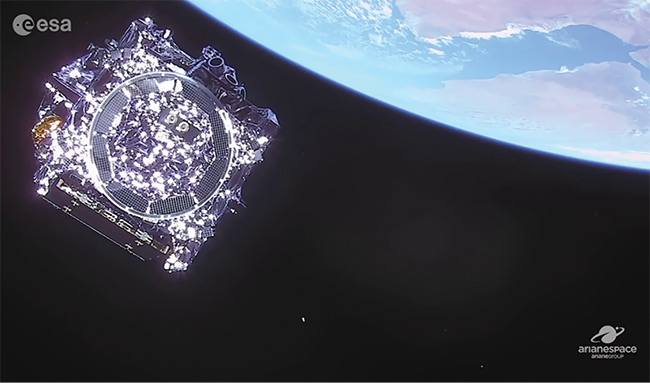
Figure 7. Webb after it separated from the Ariane 5 launcher. Courtesy of NASA/JPL-Caltech.
Ressler called that morning “the perfect day.” He watched the event on NASA TV at home with his family, with everyone in their pajamas and drinking birch beer in celebration. “It was a huge relief to finally see [Webb] launch after having worked on it for 24 years, and it was rather poignant when the camera on the Ariane Stage 2 booster caught [Webb] sailing away peacefully around the earth.”